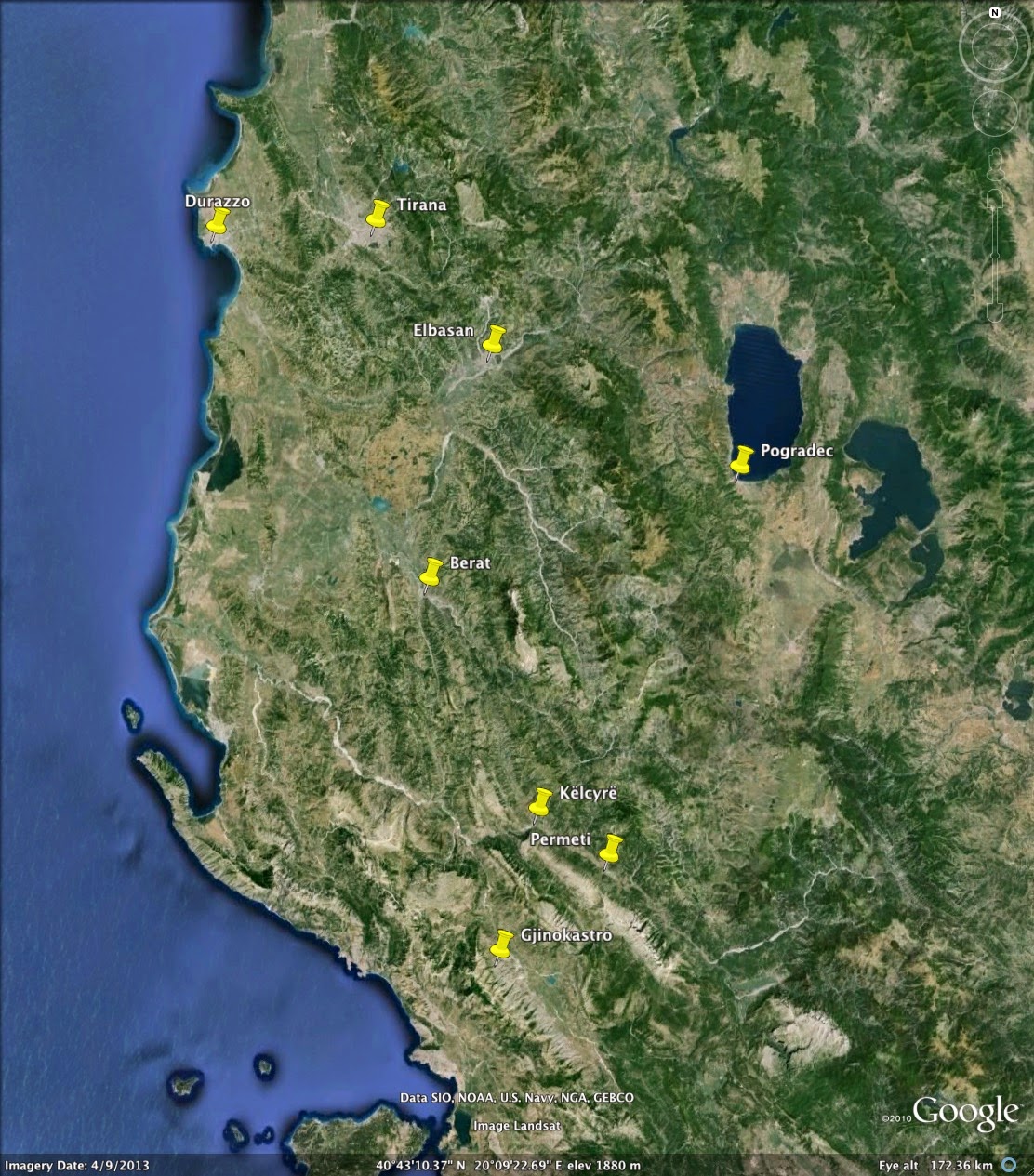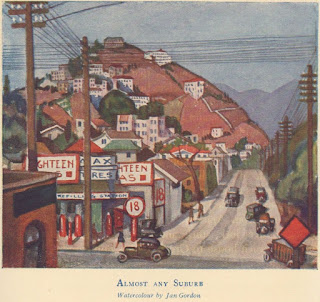Jan Gordon (1940) on "The Royal Academy: Work of the Younger Painters"
In the Liverpool Daily Post of Saturday 4th May 1940, Jan Gordon wrote on "The Royal Academy: Work of the Younger Painters."
Somebody said that feature of this year’s Royal Academy, the first second Great War Academy, was marked by one type of war picture—young women artists who have got their fathers to pose in their tin hats.
That certainly about all of the war there is except for a couple of notes by Nevinson, a file of men marching in the style of his 1915 discoveries and a rhythm of searchlight and long anti-aircraft guns named “Suburbia —1940,” and two problem pictures, both excellently painted, tempera by Miss Louisa Hodgson, "The Sinking of S.S. Goodwood,” represented by a man with an injured leg sitting in a chair, and a breughilesque landscape by Frank Archer, imaginative Polish (?) landscape invaded by Germans, “ The Cries of Them Which Have Reaped.” Among the academicians, the dominating exhibits in painting are certainly three portraits by John, “H. S. Goodhart- Rendell, Esq., F.R.I.B.A.” which indicates all his wit and vitality, and The Hon. Vincent Massey ” and “ The Lord Alington,” both touched in with his sense of character caricature.
In sculpture, equally dominating in their fashion are three figures, cast in lovely green bronze, for the Beatty and Jellicoe memorial fountains in Trafalgar Square, designed by the president, Sir Edwin Lutyens. The figures themselves, in which baroquist mermaids play sinuously and dynamically with sporting dolphins, are for Beatty, by W. McMillan, R.A., and for Jellicoe, Charles Wheeler, the newly-elected R.A. In the limited view space it is difficult to say which satisfies most, but they are fine examples of excellent team-work.
But viewing the exhibition as whole, one is bound to admit that the major weight of interest this year lies on the outside admissions. Not one of the elect has done anything that out-distances his normal production. On the other hand, the number of younger and less-known painters who excite interest is large, and perhaps the breadth of admission may be due to some repercussion from the United Artists’ show of the winter.
Among these younger painters the visitors should hunt for the works by Richard Eurich, Thomas Lowinsky, Edward Le Bas, Henry Hoyland, Helen D. Kiddall, Robert H. Barnes, Gerald Cooper, Dorothy King, Lord Methuen, Douglas P. Bliss, John Y. Gilroy, John Cole, Ethel Gabain, Saywell Allen, Macolm Milne, Linton Giles. Karl Hagedorn. Donald Craig, Thomas Hennell, Fred C. Jones, and among the sculptors Dora Gordine, Eric Shilsky, John H. V. Hodge, Marjorie Meggitt and Fred J. Kormiss.
Somebody said that feature of this year’s Royal Academy, the first second Great War Academy, was marked by one type of war picture—young women artists who have got their fathers to pose in their tin hats.
That certainly about all of the war there is except for a couple of notes by Nevinson, a file of men marching in the style of his 1915 discoveries and a rhythm of searchlight and long anti-aircraft guns named “Suburbia —1940,” and two problem pictures, both excellently painted, tempera by Miss Louisa Hodgson, "The Sinking of S.S. Goodwood,” represented by a man with an injured leg sitting in a chair, and a breughilesque landscape by Frank Archer, imaginative Polish (?) landscape invaded by Germans, “ The Cries of Them Which Have Reaped.” Among the academicians, the dominating exhibits in painting are certainly three portraits by John, “H. S. Goodhart- Rendell, Esq., F.R.I.B.A.” which indicates all his wit and vitality, and The Hon. Vincent Massey ” and “ The Lord Alington,” both touched in with his sense of character caricature.
In sculpture, equally dominating in their fashion are three figures, cast in lovely green bronze, for the Beatty and Jellicoe memorial fountains in Trafalgar Square, designed by the president, Sir Edwin Lutyens. The figures themselves, in which baroquist mermaids play sinuously and dynamically with sporting dolphins, are for Beatty, by W. McMillan, R.A., and for Jellicoe, Charles Wheeler, the newly-elected R.A. In the limited view space it is difficult to say which satisfies most, but they are fine examples of excellent team-work.
But viewing the exhibition as whole, one is bound to admit that the major weight of interest this year lies on the outside admissions. Not one of the elect has done anything that out-distances his normal production. On the other hand, the number of younger and less-known painters who excite interest is large, and perhaps the breadth of admission may be due to some repercussion from the United Artists’ show of the winter.
Among these younger painters the visitors should hunt for the works by Richard Eurich, Thomas Lowinsky, Edward Le Bas, Henry Hoyland, Helen D. Kiddall, Robert H. Barnes, Gerald Cooper, Dorothy King, Lord Methuen, Douglas P. Bliss, John Y. Gilroy, John Cole, Ethel Gabain, Saywell Allen, Macolm Milne, Linton Giles. Karl Hagedorn. Donald Craig, Thomas Hennell, Fred C. Jones, and among the sculptors Dora Gordine, Eric Shilsky, John H. V. Hodge, Marjorie Meggitt and Fred J. Kormiss.



Comments
Post a Comment